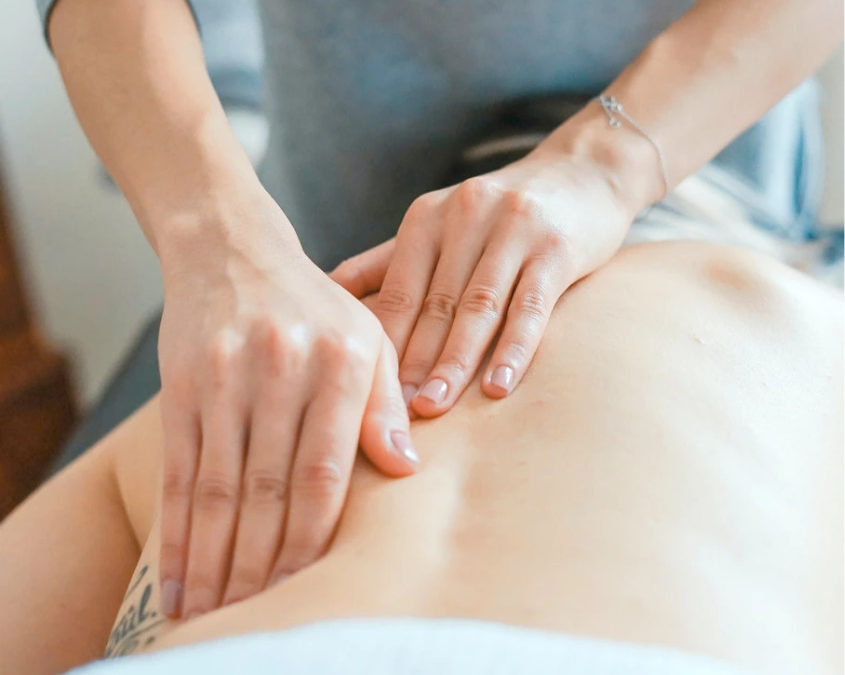Osteopathy is about movement. And movement of fluids is key for proper immune function. Proper movement is essential to the maintenance of your overall health – and it’s a key principle of osteopathy. Your immune system vessels do not have an actual pump, so they rely upon muscular contraction and changes in pressure to move your lymphatic fluids. Regular and frequent whole-body movement will help ensure that your body’s fluids flow freely.
How might osteopathic treatments boost your immune system?
Release restrictions
Injuries and inactivity can both create areas of contraction and compression in your muscles and fascia. Soft-tissue techniques can release restrictions to increase blood and lymphatic fluid flow.
Mobilize organs
Your body’s lymph nodes, thymus, bone marrow, and spleen are all primary lymphatic organs. Tonsils and adenoids (if you still have them), liver and appendix, are also part of the lymphatic system as well. Plus, there’s lymphatic tissue in your intestines (Peyer’s patches) and mucous membranes. Visceral manipulation can improve the mobility of organs, their blood supply, and nervous system input. We’ve even recently discovered the “glymphatic system” or the lymphatics present in the brain itself.
Balance hormonal and nervous systems
Chronic stress can lead to hormonal imbalances that impair the function of other organs. Cranial osteopathy and articular techniques can balance the sympathetic (fight-or-flight) and parasympathetic (rest-and-digest) systems. In turn, this restores endocrine control of immune function.
“What’s happening inside your body when you’re stressed is that your own body is giving itself multiple shots of that inflammatory hormone [cortisol], and so that tunes down your immune system’s ability to do its main job, which is to fight infection.” – Dr. Lindsey Faucette, DO
Enhance breathing
Full deep breathing diaphragmatic breathing effectively stimulates your parasympathetic nervous system. It also encourages fluid flow. Think of your diaphragm as a pump. Osteopathy treatment can mobilize your diaphragm and ribcage for better breathing.
Stimulate lymphatics
Lymphatic pumping techniques can stimulate the release of immune cells from lymph nodes. They also increase the flow of lymphatic fluid.
As always, the goal of osteopathic treatment is to enhance your body’s self-regulating mechanisms. Now, what can you do for yourself today to boost your immune function?
Four Moves for You: Moves That I Love!
1. Active Breathing: Assists lymphatic drainage throughout the body.
• Lie on your back with one hand on your belly and the other on your chest.
• Take 8 full deep breaths so that you feel your upper hand rise and fall completely while minimizing movement in your lower hand.
• Take 8 full deep breaths so that you feel your upper hand rise and fall completely while minimizing movement in your lower hand.
• As you breathe in, expand the sides and back of your ribcage imagining expansion in all directions. Pause, then exhale fully.
• Repeat for 5-10 breaths, several times throughout the day. CAUTION! If you start to feel dizzy, dial it down and focus on exhaling completely.
2. Head Ramping: Targets cervical lymph nodes and the thoracic duct, your largest lymphatic drainage portal.
• As in the breathing exercise, start in aligned standing or sitting with your ribs relaxed down. Place your hand on your sternum (breastbone); it should be vertical.
• Tuck your chin back and up, elongating your neck and keeping your eyes level on the horizon. If you’re against a wall, you’re aiming for touching it with the back of your head.
• Your ear should stack up over your shoulder joint and the skin on the back of your neck should be wrinkle free.
• You should see (or feel) multiple chins!
3. Spinal Twist: Targets abdominal lymph nodes and organs. (Remember, your gut plays a role in immune defense too.)
• Lie on your back on the floor (a bed is too soft). If your bottom ribs are sticking up or you have diastasis recti, bolster your head and shoulders to relax your ribcage to neutral (aligned with your pelvis).
• Slide your pelvis a few inches to the right and bring your right knee in toward your chest until your hip is at 90 degrees.
• Slowly rotate your pelvis to the left (just to the point of muscle resistance). Use your bolster or yoga blocks to support your knee and foot at that height.
• Allow your abdomen and spinal muscles to relax. Your ribcage, shoulder, and arm can gently release back to the ground as far as possible while keeping your knee grounded and your ribs relaxed down.
• The twist should happen at the level of your navel. It’s like wringing out your waist.
• Repeat on the other side.
4. Walking: Gets your whole body in on the action.
• Swinging your arms (focus on pulling them back then letting go) stimulates your axillary (armpit) nodes, while your legs activate those in the inguinal (groin) region.
There are four simple moves for a whole-body approach to immune boosting. Of course, there are many more ways to help yourself. But moving more, and in better alignment, is a most excellent place to start.

